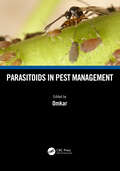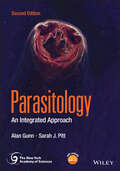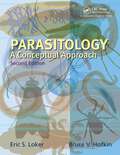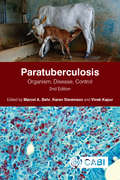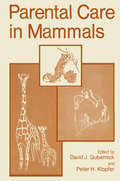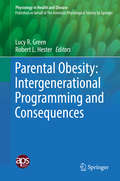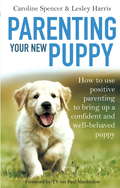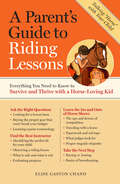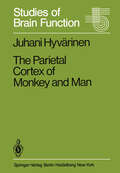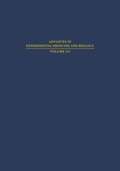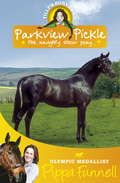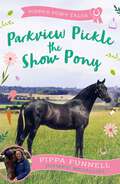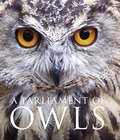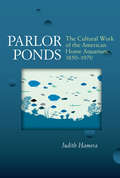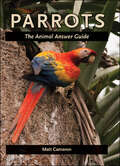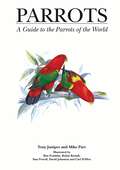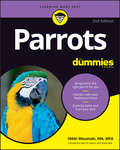- Table View
- List View
Parasitoids in Pest Management
by OmkarPests cause economic damage to crops and stored products, while vectors are responsible for the transmission of disease-causing agents in human beings and livestock. Although the application of synthetic pesticides in agriculture has given immediate relief, it has also caused well-known side effects, leading to a general consensus among entomologists and agriculturists to shift towards other ecofriendly pest management. Insect natural enemies consisting of predators, parasitoids, and pathogens have attracted the attention of scientists across the globe. These natural enemies exist in agroecosystems and suppress the populations of pests. Parasitoids are farmers’ friends and the most successful group of natural enemies. Highly specialised in their host choice, the female parasitoid searches for a suitable host to lay eggs and larvae in, on or near the hosts. Exploiting this potency of parasitoids may yield successful results in controlling notorious pests in an ecofriendly way.This book covers information on the important biocontrol agents effective in pest suppression. It starts with insect parasitic groups followed by specific groups of parasitoids. It is hoped that the book presents a comprehensive account of beneficial parasitoirds, and will be useful to undergraduate and postgraduate students of Entomology, Biological Control, Plant Protection, Agricultural Zoology, and Zoology, besides those involved in competitive examinations and policy planning. Features: • Each chapter has been written by very experienced specialists.• Every chapter includes Learning Objectives and Points to Remember.• This book offers comprehensive knowledge of parasitoids and their application in pestmanagement in a rational way.
Parasitoids in Pest Management
by OmkarPests cause economic damage to crops and stored products, while vectors are responsible for the transmission of disease-causing agents in human beings and livestock. Although the application of synthetic pesticides in agriculture has given immediate relief, it has also caused well-known side effects, leading to a general consensus among entomologists and agriculturists to shift towards other ecofriendly pest management. Insect natural enemies consisting of predators, parasitoids, and pathogens have attracted the attention of scientists across the globe. These natural enemies exist in agroecosystems and suppress the populations of pests. Parasitoids are farmers’ friends and the most successful group of natural enemies. Highly specialised in their host choice, the female parasitoid searches for a suitable host to lay eggs and larvae in, on or near the hosts. Exploiting this potency of parasitoids may yield successful results in controlling notorious pests in an ecofriendly way.This book covers information on the important biocontrol agents effective in pest suppression. It starts with insect parasitic groups followed by specific groups of parasitoids. It is hoped that the book presents a comprehensive account of beneficial parasitoirds, and will be useful to undergraduate and postgraduate students of Entomology, Biological Control, Plant Protection, Agricultural Zoology, and Zoology, besides those involved in competitive examinations and policy planning. Features: • Each chapter has been written by very experienced specialists.• Every chapter includes Learning Objectives and Points to Remember.• This book offers comprehensive knowledge of parasitoids and their application in pestmanagement in a rational way.
Parasitology: An Integrated Approach (New York Academy of Sciences)
by Alan Gunn Sarah J. PittParasitology Highly detailed textbook on parasites and parasite relationships The fully revised edition of Parasitology: An Integrated Approach holds true to its engaging and easy-to-read approach. It comprehensively covers the complex and dynamic interaction between the parasite and its host ranging from invertebrates to vertebrates. Following an integrated approach, the authors explain how the study of parasites requires an understanding of biological concepts such as growth and reproduction, molecular biology, biochemistry, immunology, and pathology. In this second edition, they further address parasites and parasite relationships in the grand scheme of global changes and their impact. This textbook also reviews the often-neglected positive aspects of parasite infections and how humans have used parasites for their own advantage. Parasitology: An Integrated Approach, 2nd edition includes supplementary learning resources such as self-assessment quizzes, practical exercises, and an extensive collection of photographs. Now includes parasite life cycles in colour Strong focus on parasite interactions with other pathogens such as bacteria and viruses Discusses major advancements in the field of parasite diagnostics Additional image material and learning resources (quizzes, practical exercises) provided online A valuable and comprehensive learning resource for undergraduate students in the biological, biomedical and veterinary sciences and in medicine. It is also of interest to postgraduates and professionals with an interest including but not limited to parasitology, animal welfare, ecology, and medical microbiology.
Parasitology: A Conceptual Approach
by Eric S. Loker Bruce V. HofkinProduced amidst the still rippling effects of a pandemic and as the world experiences the increasing burden of global warming and a rapidly changing biosphere, the second edition of Parasitology: A Conceptual Approach offers a timely overview of the eukaryotic parasites affecting human health and the health of domestic and wild animals and plants. The book offers a broadly encompassing, integrative view of the phenomenon of parasitism and of the remarkable diversity of the world’s parasites. This second edition has been thoroughly updated on all aspects of parasitism, including expanded sections on parasite biodiversity, parasite genomes, the interface between parasitology and disease ecology, and applications of new techniques like CRISPR and gene drives for parasite control. Key selling features: Emphasis on a distinctive integrative and conceptual approach rather than the taxon-by-taxon approach used in most parasitology books A concise, handy Rogues Gallery section that summarizes the basic biology for the most important eukaryotic parasites of humans and domestic animals, one a reader is repeatedly directed to throughout the chapters Outstanding full-color illustrations and photographs to reinforce key points The use of text boxes to set apart important topics or ideas that deserve special emphasis Provision of end-of-chapter summaries, questions to test understanding and key references for those wishing to seek further information Reference to particular URLs to highlight recent developments that often pose new and distinctive problems awaiting solution Parasitology: A Conceptual Approach is designed for an upper-level undergraduate audience, but its readability and careful explanation of underlying scientific concepts and terminology makes it appropriate for anyone seeking a broader understanding of the impact of infectious organisms on our well-being and the changes underway in the modern world.
Parasitology: A Conceptual Approach
by Eric S. Loker Bruce V. HofkinProduced amidst the still rippling effects of a pandemic and as the world experiences the increasing burden of global warming and a rapidly changing biosphere, the second edition of Parasitology: A Conceptual Approach offers a timely overview of the eukaryotic parasites affecting human health and the health of domestic and wild animals and plants. The book offers a broadly encompassing, integrative view of the phenomenon of parasitism and of the remarkable diversity of the world’s parasites. This second edition has been thoroughly updated on all aspects of parasitism, including expanded sections on parasite biodiversity, parasite genomes, the interface between parasitology and disease ecology, and applications of new techniques like CRISPR and gene drives for parasite control. Key selling features: Emphasis on a distinctive integrative and conceptual approach rather than the taxon-by-taxon approach used in most parasitology books A concise, handy Rogues Gallery section that summarizes the basic biology for the most important eukaryotic parasites of humans and domestic animals, one a reader is repeatedly directed to throughout the chapters Outstanding full-color illustrations and photographs to reinforce key points The use of text boxes to set apart important topics or ideas that deserve special emphasis Provision of end-of-chapter summaries, questions to test understanding and key references for those wishing to seek further information Reference to particular URLs to highlight recent developments that often pose new and distinctive problems awaiting solution Parasitology: A Conceptual Approach is designed for an upper-level undergraduate audience, but its readability and careful explanation of underlying scientific concepts and terminology makes it appropriate for anyone seeking a broader understanding of the impact of infectious organisms on our well-being and the changes underway in the modern world.
Paratuberculosis: Organism, Disease, Control
by Ali Thompson David C Alexander Angelika Agdestein Christina Ahlstrom John P. Bannantine Herman W. Barkema Raul Barletta Douglas Begg Marcel Behr Evan P. Brenner Tim Bull Ofelia Chacon Paul Coussens Ross S. Davidson Justin L. DeKuiper Kumudika De Silva Berit Djonne Karsten Donat Shannon Duffy Natalia Elguezabal Susanne Eisenberg Naomi J. Fox Joseba M. Garrido Irene R. Grant J Frank Griffin Murray Hines II Michael R Hutchings Jamie Imada Ramón A. Juste Edward Kabara Annette H. Kampen David F. Kelton Jennifer N. Kiser Elise A. Lamont Kari R. Lybeck Colin Mackintosh Glenn Marion Ian Marsh Holly L Neibergs Søren Saxmose Nielsen Rory O'Brien Karren M. Plain Auriol Purdie Govardhan Rathnaiah Iker A. Sevilla Fernanda M. Shoyama Lesley A. Smith Srinand Sreevatsan Judy Stabel Jaryd R. Sullivan Adel Talaat Girum T. Tessema Christine Turenne Richard Whittington Chia-Wei Wu Denise K. ZinnielParatuberculosis, also referred to as Johne's disease, affects principally cattle, goats, sheep, buffalo, deer and other ruminants. It is common worldwide and responsible for significant economic losses in the ruminant livestock industries. A timely follow up to the first book on Paratuberculosis, this new edition is still the only comprehensive text providing both historical context and the latest developments in the field. Examining the epidemiology of paratuberculosis, the organism that causes the disease, and practical aspects of its diagnosis and control, it also addresses the link between paratuberculosis in the food chain and human health implications, including Crohn's disease. This new edition: · Builds on a strong foundation to update, streamline and better structure existing chapters with important new developments from the last decade, such as whole genome sequencing and phage-based assays; · Includes new chapters on the fast-growing field of whole genome based comparative genomics, and the increasing opportunities for disease control in low- and middle-income countries; · Increases inclusivity by bringing on board new rising star authors from diverse backgrounds to provide international perspectives. A truly comprehensive, critical reference resource, this book is an essential reference for large animal veterinarians, livestock industry personnel and those involved in the dairy and meat industries, as well as microbiologists, researchers and students in these fields.
Parental Care in Mammals
by David J. GubernickThe editors of this volume have honored me by their invitation to write its Fore word, an invitation extended because of my editing a book on the maternal behav ior of mammals in 1963. Much as I would like to think that I had opened a new area of study-and so played some part in the appearance of this fine new collec tion of chapters-the facts are quite otherwise. That in 1963 I could assemble the efforts of many distinguished investigators shows that the topic had already engaged their attention, and had for some years past. But even then, the topic had origins extending much farther into the past, to mention only Wiesner and Sheard's book Maternal Behavior in the Rat of 1933. Nevertheless, in 1963 it seemed to me that the study of maternal care in mammals had lagged behind the study of other kinds of social behavior. The present volume does much to establish parental care of the young as a topic central to an understanding of the relation between ontogeny and phylogeny, to the development of the young, to the social organization of the species, and to its preservation. It may now be seen not only as interesting but as a most signifi cant pattern of behavior among mammals.
Parental Obesity: Intergenerational Programming and Consequences (Physiology in Health and Disease)
by Lucy R. Green Robert L. HesterIn this book, leading figures in the field of Developmental Origins of Health and Disease provide up-to-date information from human clinical trials, cohorts, and animal physiology experiments to reveal the interdependence between parental obesity and health of the offspring. Obesity of the mother and father produces obesity in their offspring, so we are caught up in an intergenerational cycle, which means that even our children’s future health is in peril. This book gives a timely and much-needed synthesis of the mechanisms, potential targets of future interventions, and the challenges that need to be overcome in order to break the intergenerational cycle of obesity. This has profound implications for the way in which scientific, clinical and health policy activities are to be directed in order to combat the so-called epidemic of obesity, as well as diabetes, cancer and cardiovascular disease. The book will be of interest to students, clinicians, researchers and health policy makers who are either seeking an introduction to the area of Developmental Origins of Health and Disease or have a specific interest in the pathogenesis of obesity.
Parenting Your New Puppy: How to use positive parenting to bring up a confident and well-behaved puppy
by Caroline Spencer Lesley HarrisIn this practical, readable and entertaining book, Caroline Spencer and Lesley Harris bring a new slant to a well-explored subject and propose significant shifts in an owner's understanding of why their puppy behaves as he does and what makes him tick.Like children, dogs are born without behavioural issues; it is what happens in the early weeks of life, and the way in which his new owner nurtures, guides and educates him that will enable him to become a well-balanced adult - or not.Drawing on a combined 40 years of experience, the authors will help you in your initial choice of a puppy. When you take him into your home, it will show you how to interpret natural canine communication and play, and how to use these signals to educate and guide your puppy in a positive way. The confidence he gains in you, the parent, will help him through sometimes difficult and confusing situations, to become a happy, trustworthy, and trusting friend for life.
A Parent's Guide to Riding Lessons: Everything You Need to Know to Survive and Thrive with a Horse-Loving Kid
by Elise Gaston ChandIf you don&’t know the difference between a bridle and a saddle but your child dreams of riding horses, this informative guide will answer all of your most pressing questions. Elise Gaston Chand provides informed and sensible tips on finding qualified instructors, the cost of lessons, safety concerns, and much more. Learn what to watch for as your child&’s riding progresses, confidently steer your child toward rewarding competition experiences, and take pride in all of your child&’s riding achievements.
The Parietal Cortex of Monkey and Man (Studies of Brain Function #8)
by J. HyvärinenAn invitation from the Editors to contribute to 'Studies of Brain Functions' with a monograph on the parietal lobe of fers me an opportunity to present in a concentrated form my studies on this part of the brain from a period of some what over a decade. The parietal lobe, notably its posterior part, is a very complex neural system whose functions I have been able to study only superficially and without ex tensive coverage of all its parts. Therefore I did not want to limit myself entirely to my own work but found the task of writing more interesti'ng by including sections reviewing rel evant literature. Thus Chapter III dealing with the primary somatosensory cortex and Chapters IX, X, and XI concerning area 7 describe work done in my laboratory. Chapter VIII describes microelectrode work on area 7 and covers both the work of my group and that of others working on this area. Chapters II and IV to VII are based on closely related anatomical, physiological and clinical studies performed by others, and Chapter XII is a personal attempt at a synthesis of the functions of the parietal lobe. Thus this monograph is neither a strict review of all important works on the parietal lobe nor is it limited only to my own studies and those of my collaborators. Instead it attempts to be a balanced ex position of both aspects promoting, hopefully, a synthetic view of the primate parietal lobe.
Parkinson’s Disease—II: Aging and Neuroendocrine Relationships (Advances in Experimental Medicine and Biology #113)
by C. E. FinchThese Proceedings emanate from the Second Tarbox Parkinson's Disease Symposium held February 2-4, 1978, at the SouthPark Inn in Lubbock, Texas. The Symposium was sponsored by the Tarbox Parkin son's Disease Institute and the Department of Pharmacology and Therapeutics of the Texas Tech University School of Medicine at Lubbock. The First Symposium took place in October, 1976. The Second Tarbox Parkinson's Disease Symposium boldly brought together investigators at the cutting edge of aging and neuroendo crine research and attempted to relate them to Parkinson's disease. Credit for the concept must go to the Program Chairman, Dr. David E. Potter. Once the plan was conceived the organizers relied heavily on the advice of Dr. Caleb E. Finch, whose counsel in developing the program was invaluable. The final verdict on the success of this daring venture must await the outcome of the publication of this Volume. Nevertheless, those in attendance could not fail but note the enthusiasm and excitement of the participants as their findings from the diverse disciplines of the neurological, aging, and endo crine sciences converged. This in itself is testimony that the Sym posium accomplished some degree of success. The Tarbox Parkinson's Disease Institute was established in 1973 with funds appropriated by the State of Texas and is dedicated to research, patient care, and education in Parkinson's disease and related neurological disorders. The Institute is named after Mr.
Parkview Pickle the Show Pony: Book 9 (Tilly's Pony Tails #9)
by Pippa FunnellMeet Tilly Redbrow, who doesn't just love horses - she lives, breathes and dreams them too! When Parkview Pickle arrives at Silver Shoe Farm it's clear to Tilly that something isn't right. She may be a show pony, but she's restless, fussy and just a little bit overweight. Can Tilly persuade Pickle's owner to let her help?From Pony Club to riding for the British team, and for every girl who has ever longed for a pony of her own, these delightful, warm and engaging stories are packed with Pippa Funnell's expert advice on everything you ever wanted to know about horses.
Parkview Pickle the Show Pony (Pippa's Pony Tales #9)
by Pippa FunnellTilly dreams of having a pony of her own. One that only she can ride to stardom. Will her wishes come true when she joins Silver Shoe Farm Stables?Tilly and Magic Spirit are happy at Silver Shoe Farm. But when the dainty and elegant show pony Parkview Pickle arrives, Tilly knows straightaway that something is wrong. She wants to help, but she's not sure that Pickle's owner will let her. Collect all 18 titles in this series of irresistible, uplifting and heartwarming pony adventures. Printed in a dyslexia friendly font and packed with up to date tips from three times Olympic Medallist, Pippa Funnell, as well as a helpful glossary and black and white illustrations on every spread.
A Parliament of Owls
by Mike UnwinA unique collection of stunning photographs and detailed portraits of over fifty of the most striking owl species around the world. Recommended for viewing on a colour tablet.
Parlor Ponds: The Cultural Work of the American Home Aquarium, 1850 - 1970
by Judith HameraParlor Ponds: The Cultural Work of the American Home Aquarium, 1850–1970 examines the myriad cultural meanings of the American home aquarium during the nineteenth and twentieth centuries and argues that the home aquarium provided its enthusiasts with a potent tool for managing the challenges of historical change, from urbanization to globalization. The tank could be a window to an alien world, a theater for domestic melodrama, or a vehicle in a fantastical undersea journey. Its residents were seen as inscrutable and wholly disposable “its,” as deeply loved and charismatic individuals, and as alter egos by aquarists themselves. Parlor Ponds fills a gap in the growing field of animal studies by showing that the tank is an emblematic product of modernity, one using elements of exploration, technology, science, and a commitment to rigorous observation to contain anxieties spawned by industrialization, urbanization, changing gender roles, and imperial entanglements. Judith Hamera engages advertisements, images, memoirs, public aquarium programs, and enthusiast publications to show how the history of the aquarium illuminates complex cultural attitudes toward nature and domestication, science and religion, gender and alterity, and national conquest and environmental stewardship with an emphasis on the ways it illuminates American public discourse on colonial and postcolonial expansion.
Parrot (large print)
by RnibThis is an image of a blue and yellow parrot. It is seen from the side and facing to the left so that only one of its eyes can be found. There is a locator dot shown, which will be at the top left of the page when the image is the correct way up. The parrot's head is in the top left of the page. Its eye is in the middle of its head with a patch of green above it and two horizontal black stripes below it. Its open, curved beak is down the page from this. To the right of its beak you can find its yellow-feathered body and right again its outstretched wing. The parrot's blue tail is in the bottom centre of the page and to the left of this is the one of the parrot's feet. Only two of its toes can be found: one to the right and one to the left. Its foot is resting on a light green stone.
Parrot (UEB contracted)
by RnibThis is an image of a blue and yellow parrot. It is seen from the side and facing to the left so that only one of its eyes can be found. There is a locator dot shown, which will be at the top left of the page when the image is the correct way up. The parrot's head is in the top left of the page. Its eye is in the middle of its head with a patch of green above it and two horizontal black stripes below it. Its open, curved beak is down the page from this. To the right of its beak you can find its yellow-feathered body and right again its outstretched wing. The parrot's blue tail is in the bottom centre of the page and to the left of this is the one of the parrot's feet. Only two of its toes can be found: one to the right and one to the left. Its foot is resting on a light green stone.
Parrot (UEB uncontracted)
by RnibThis is an image of a blue and yellow parrot. It is seen from the side and facing to the left so that only one of its eyes can be found. There is a locator dot shown, which will be at the top left of the page when the image is the correct way up. The parrot's head is in the top left of the page. Its eye is in the middle of its head with a patch of green above it and two horizontal black stripes below it. Its open, curved beak is down the page from this. To the right of its beak you can find its yellow-feathered body and right again its outstretched wing. The parrot's blue tail is in the bottom centre of the page and to the left of this is the one of the parrot's feet. Only two of its toes can be found: one to the right and one to the left. Its foot is resting on a light green stone.
Parrots: The Animal Answer Guide (The Animal Answer Guides: Q&A for the Curious Naturalist)
by Matt CameronHave you ever wondered what parrots eat in the wild? Or why so many species live in the Amazon? How intelligent are parrots? What is the world’s rarest parrot? Parrots: The Animal Answer Guide provides detailed, factual answers to the ninety questions most on our minds. There are more than 350 species of these colorful callers, ranging in size from the diminutive lovebird to the massive macaw. Many species can live to be octogenarians in captivity—sometimes outliving their human caretakers by decades.The beautiful plumage of parrots and the ability to mimic sounds are both a blessing and a curse. A number of species are in danger of extinction because they are captured and sold into the pet trade by unscrupulous dealers. Fortunately, most parrot owners and retailers rely on captive breeding, although an appalling amount of wild collection continues. In addition to discussing parrot behavior and biology, Matt Cameron reveals the truth about the trade in wild parrots and explains what each of us can do to help save native populations. Whether you are a parrot owner, birder, ornithologist, or curious naturalist, you will find that Cameron asks and fully answers every question you have about these incredible birds.
Parrots: The Animal Answer Guide (The Animal Answer Guides: Q&A for the Curious Naturalist)
by Matt CameronHave you ever wondered what parrots eat in the wild? Or why so many species live in the Amazon? How intelligent are parrots? What is the world’s rarest parrot? Parrots: The Animal Answer Guide provides detailed, factual answers to the ninety questions most on our minds. There are more than 350 species of these colorful callers, ranging in size from the diminutive lovebird to the massive macaw. Many species can live to be octogenarians in captivity—sometimes outliving their human caretakers by decades.The beautiful plumage of parrots and the ability to mimic sounds are both a blessing and a curse. A number of species are in danger of extinction because they are captured and sold into the pet trade by unscrupulous dealers. Fortunately, most parrot owners and retailers rely on captive breeding, although an appalling amount of wild collection continues. In addition to discussing parrot behavior and biology, Matt Cameron reveals the truth about the trade in wild parrots and explains what each of us can do to help save native populations. Whether you are a parrot owner, birder, ornithologist, or curious naturalist, you will find that Cameron asks and fully answers every question you have about these incredible birds.
Parrots: A Guide to Parrots of the World (Helm Identification Guides)
by Mike Parr Tony JuniperThis is the first book created primarily for the field identification of parrots, one of the most familiar and colorful groups of birds. From the mighty. macaws to the diminutive pygmy parrots, the 350 species of parrots include cockatoos, parakeets, lovebirds, and Budgerigar. Most are brightly colored or even gaudy, but a few are drab, and some are nocturnal and flightess. Parrots, found throughout most of the warmer regions of the world, occur in greatest numbers in Australasian and South America.This book includes 88 superb color illustrations of every species and most identifiable subspecies of parrot, as well as range maps of their locations. It offers many firsthand insights into the ecology of each species, vocalizations, life cycle characteristics, and geographical variation. It also provides up-to-date information on the conservation status of those species of parrots that are threatened or endangered.
Parrots For Dummies
by Nikki MoustakiRepeat after me: Parrots aren’t just for pirates! While parrots have a historical reputation for being a pirate's best friend, in the modern-day U.S.—where birds are the nation’s third most popular household pet-thousands of landlubbers are in on the act! And that’s not surprising—parrots are as affectionate, friendly, and fun to be with as a dog or cat. They are also relatively low-maintenance, with no rude 5 a.m. awakenings with demands for food or punishing walks. Renowned avian care and behavior consultant Nikki Moustaki is your friendly guide to the colorful world of this intelligent and chatty pet. In this book, you'll be introduced to the vibrant diversity of the parrot world, which covers a wide variety of Psittacidae family members, including macaws, cockatiels, and parakeets. You'll also learn the best ways to choose, care for, and love your resplendently feathered companion. Pick your perfect parrot Devour the latest on nutrition Tame and train Make the perfect home Whether you're just setting out in the parrot world or are a seasoned voyager on the parrot-y seas, this 2nd edition of Parrots For Dummies has something for you and your pet—and will repay the hard-won pirate gold you spent on it a thousand times over!
Parrots For Dummies
by Nikki MoustakiRepeat after me: Parrots aren’t just for pirates! While parrots have a historical reputation for being a pirate's best friend, in the modern-day U.S.—where birds are the nation’s third most popular household pet-thousands of landlubbers are in on the act! And that’s not surprising—parrots are as affectionate, friendly, and fun to be with as a dog or cat. They are also relatively low-maintenance, with no rude 5 a.m. awakenings with demands for food or punishing walks. Renowned avian care and behavior consultant Nikki Moustaki is your friendly guide to the colorful world of this intelligent and chatty pet. In this book, you'll be introduced to the vibrant diversity of the parrot world, which covers a wide variety of Psittacidae family members, including macaws, cockatiels, and parakeets. You'll also learn the best ways to choose, care for, and love your resplendently feathered companion. Pick your perfect parrot Devour the latest on nutrition Tame and train Make the perfect home Whether you're just setting out in the parrot world or are a seasoned voyager on the parrot-y seas, this 2nd edition of Parrots For Dummies has something for you and your pet—and will repay the hard-won pirate gold you spent on it a thousand times over!
